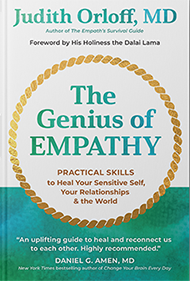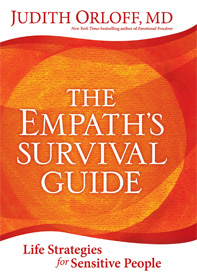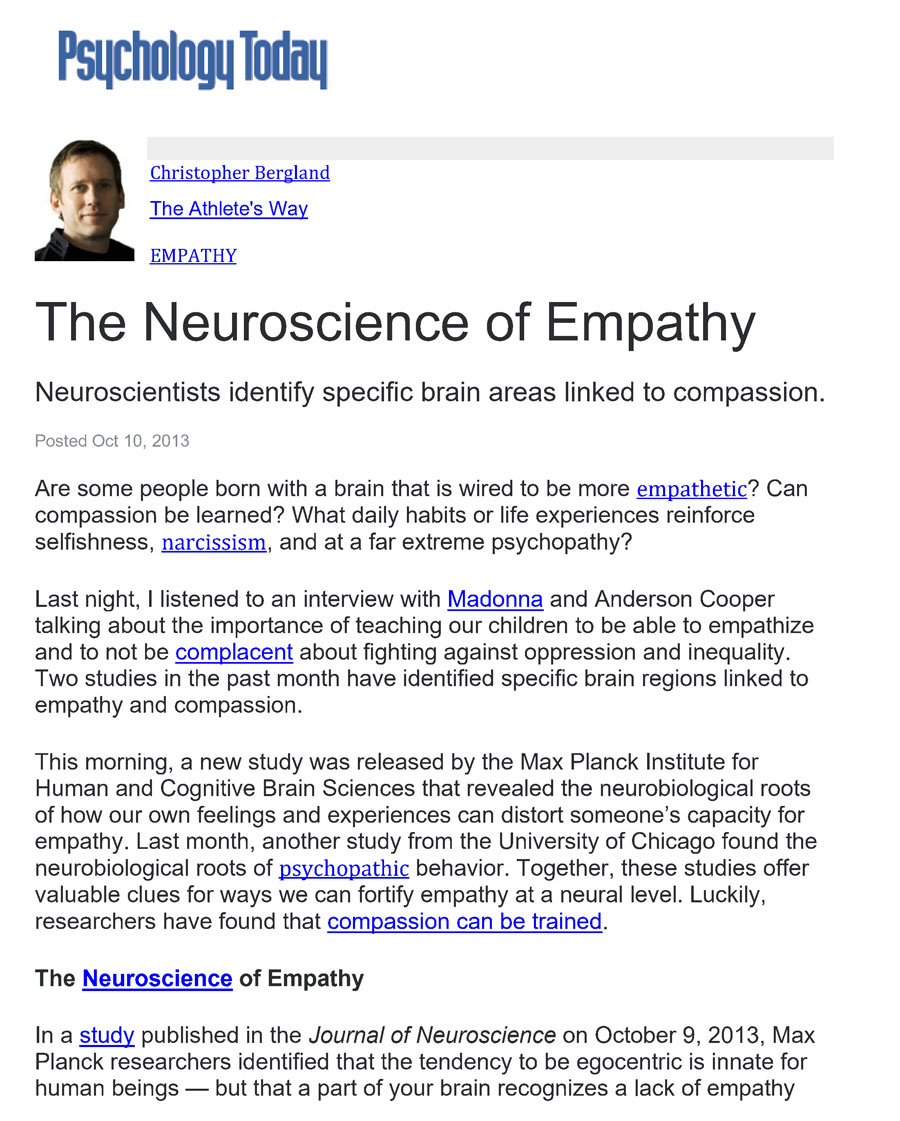
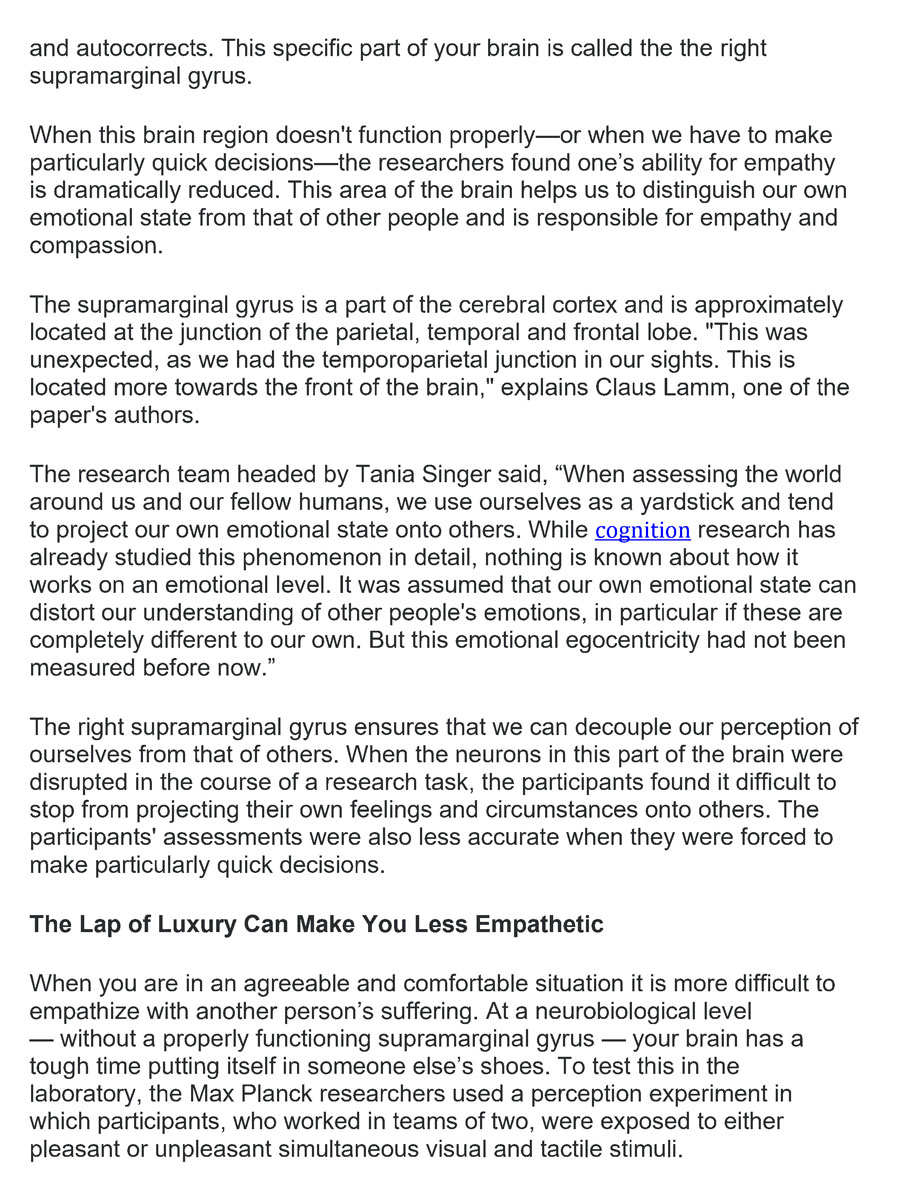
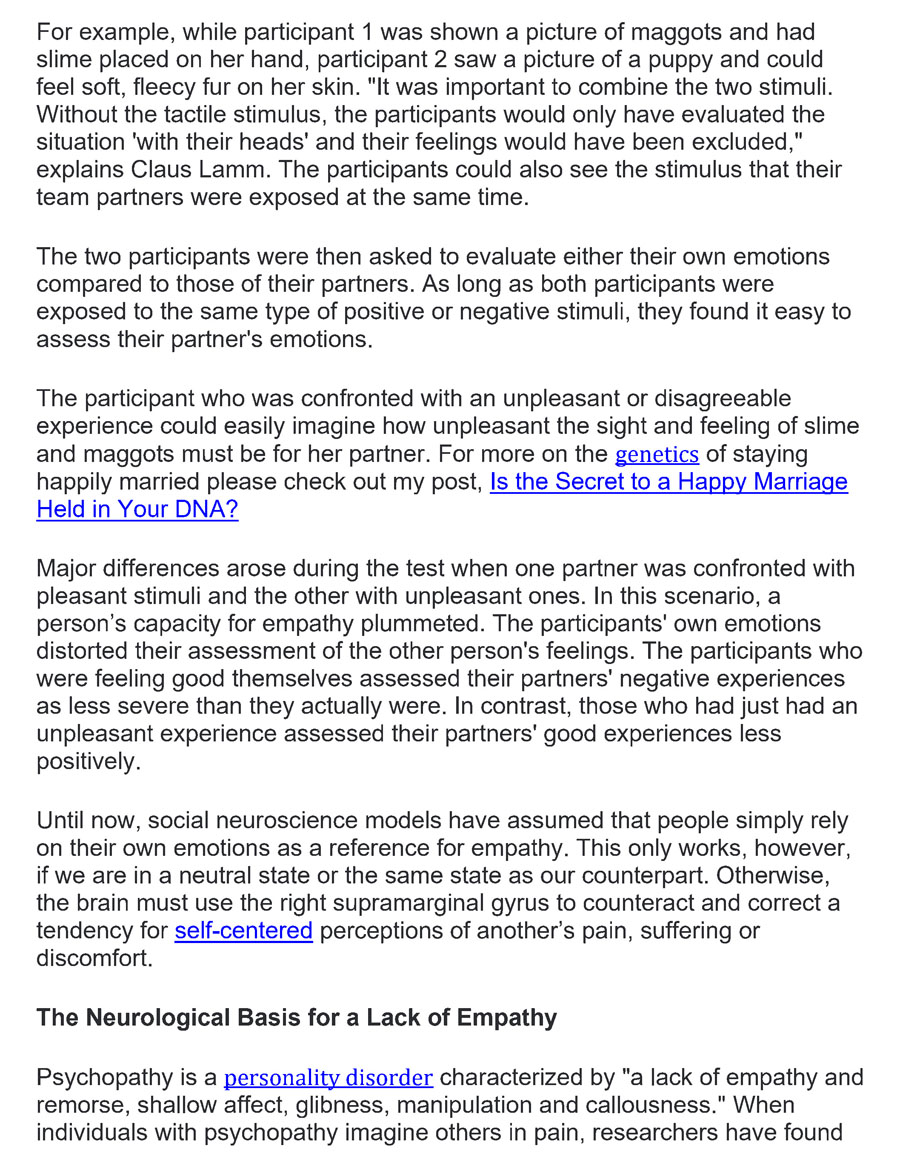
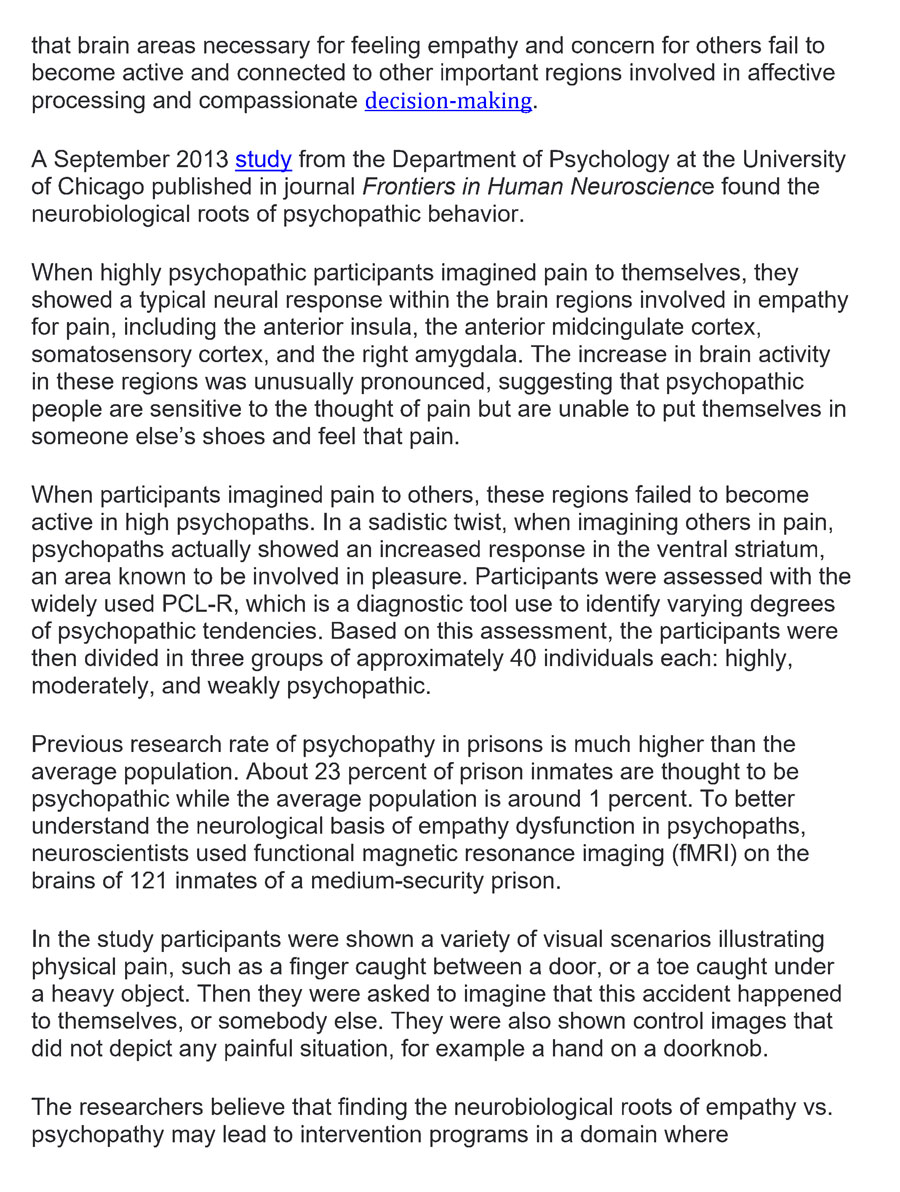
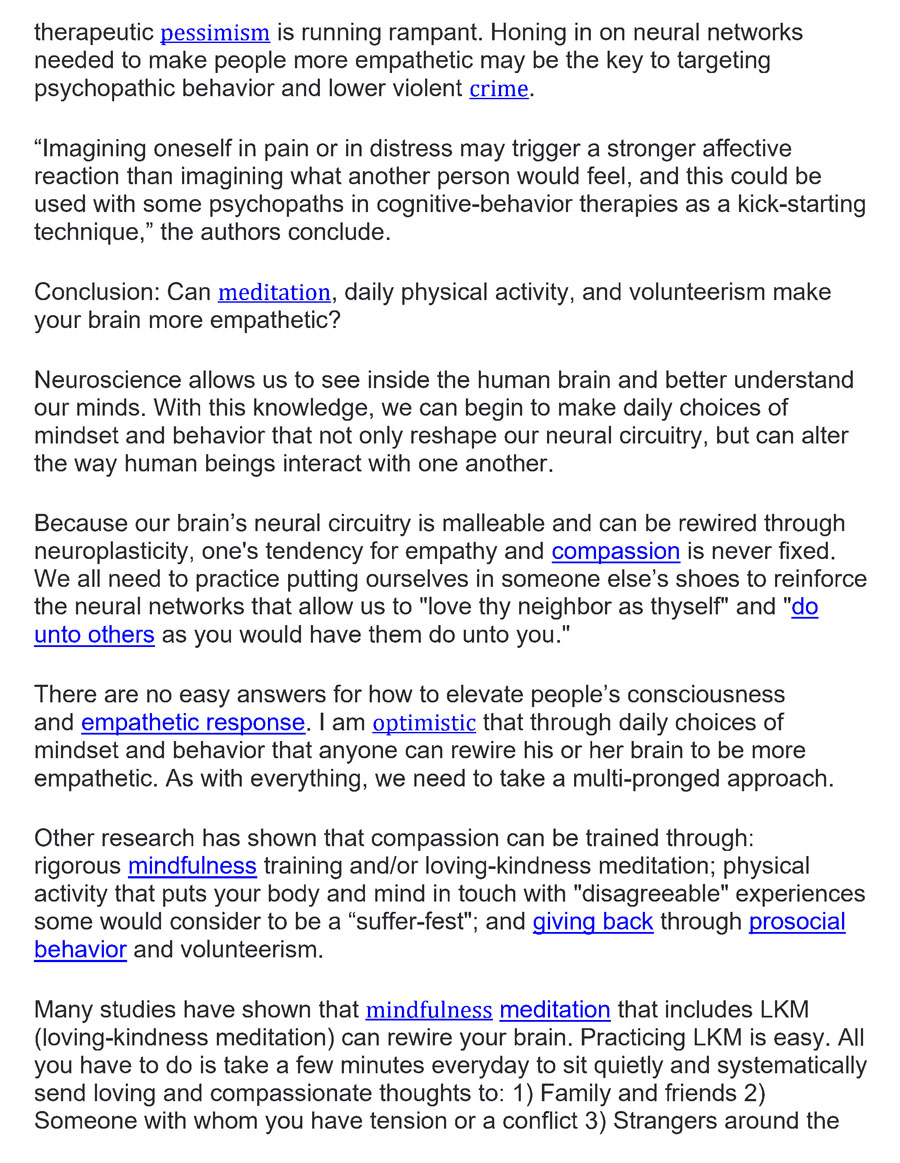
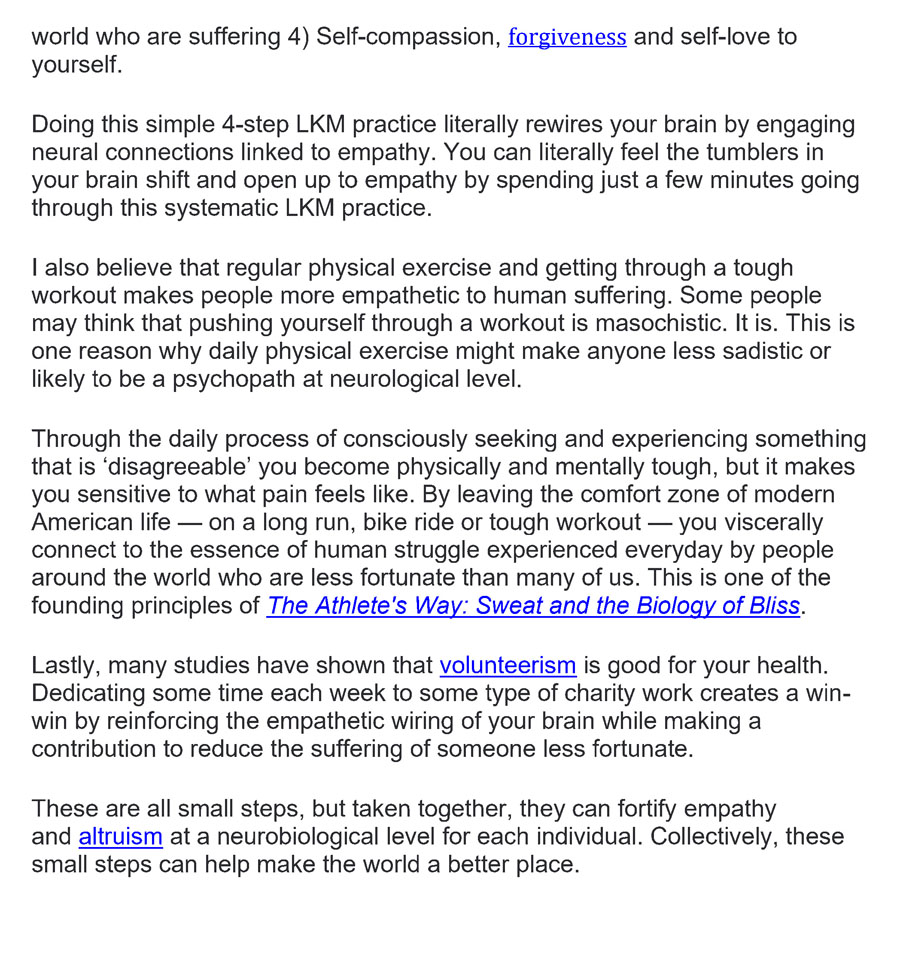
The Science of Empathy
Empathy is when we reach our hearts out to others and put ourselves in their shoes. However, being an empath goes even farther. Like many of my patients and myself, empaths are people who’re high on the empathic spectrum and actually feel what is happening in others in their own bodies. As a result, empaths can have incredible compassion for people–but they often get exhausted from feeling “too much” unless they develop strategies to safeguard their sensitivities and develop healthy boundaries
In my book, “The Empath’s Survival Guide” I discuss the following intriguing scientific explanations of empathy and empaths. This will help us more deeply understand the power of empathy so we can utilize and honor it in our lives.
Mirror-Touch Synesthesia
A finding that is particularly compelling, is the extraordinary state called “mirror-touch synesthesia.” Synesthesia is a neurological condition in which two different senses are paired in the brain. For instance, you see colors when you hear a piece of music or you taste words. Famous synesthetics include Isaac Newton, Billy Joel, and violinist Itzhak Perlman. However, with mirror-touch synesthesia, people can actually feel the emotions and sensations of others in their own bodies as if these were their own. This is a wonderful neurological explanation of an empath’s experience.
The Dali Lama says, “Empathy is the most precious human quality.” During these stressful times, it’s easy to get overwhelmed. Even so, empathy is the quality that will get us through. It will enable us to respect one another, even if we disagree. Empathy doesn’t make you a sentimental softy without discernment. It allows you to keep your heart open to foster tolerance and understanding. It might not always be effective in getting through to people and creating peace but I think it’s the best chance we have.
